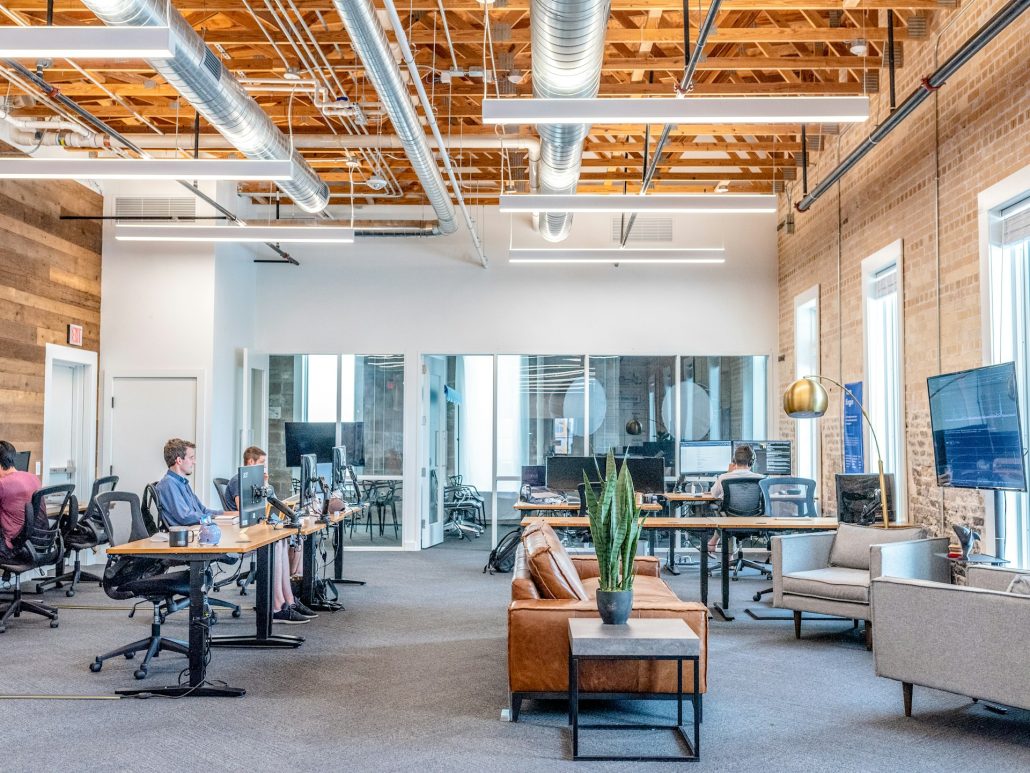Contributed post.
A workplace is remembered as much for its ceiling panels and air vents as for its policies. Dripping water, buzzing lights, and rooms that never hold a steady temperature all shape daily attitudes toward work. Facility design reaches far beyond comfort; it affects focus, mood, and the decision to remain with an organization. Each detail becomes a reflection of leadership’s priorities and care for people’s experience.
Today’s staff want environments that adapt fluidly to shifting tasks without friction. Upgrades that reduce interruptions and improve comfort make workdays less draining and more rewarding. Flexibility, visible upkeep, and practical improvements communicate long-term commitment. When surroundings feel supportive and thoughtfully managed, talent is more likely to stay, contribute, and thrive.
Infrastructure That Eliminates Everyday Friction
Overhead trays and electrical busways bring power directly to team spaces, avoiding the mess of tangled cords and disruptive rewiring. Ceiling drops and modular floor boxes create adaptable layouts, while plug-and-play trunking lets IT add outlets or ports in hours rather than days. These solutions reduce downtime, minimize interruptions, and give employees consistent access to the tools they need.
Clean layouts also project safety and professionalism. Clear aisles, labeled panels, and dedicated contractor paths shorten repair times and reassure staff that maintenance will not derail their work. Mapping power corridors in advance and prioritizing overhead access during refresh projects preserves flexibility, creating infrastructure that supports daily productivity while signaling care for staff time.
Comfort Upgrades That Translate Into Loyalty
Workplace comfort often matters more than glossy finishes. A quiet desk near a stable vent can change attitudes far faster than a redesigned lobby. Local climate zones paired with simple user controls end thermostat disputes, while small vents keep teams comfortable without spreading disruption. Acoustic baffles, upholstered surfaces, and compact focus booths reduce background noise, allowing concentration during high-pressure periods.
Lighting aligned with natural daylight helps avoid afternoon fatigue, lifting mood across entire floors. Upgraded fixtures and accessible controls send a subtle but lasting message of respect for workplace well-being. Quarterly comfort assessments linked to occupancy trends highlight priority areas for improvements, reinforcing leadership’s willingness to act on feedback and extend staff loyalty.
Spaces Designed for Collaboration and Autonomy
Collaboration thrives in spaces built for flexibility. Movable tables, wireless tools, and accessible charging allow teams to gather quickly and focus on ideas rather than logistics. Clear wayfinding and reservable hubs reduce wasted time, while reliable technology removes distractions. The right setup turns group sessions into smooth, productive experiences that encourage creativity and progress.
Individual work deserves equal attention. Quiet pods, adjustable desks, and neighborhood-style layouts give staff control over their environment. Options to shift between group zones and private areas support both concentration and teamwork. When autonomy and collaboration coexist, employees gain a sense of balance, making the workplace not only efficient but genuinely satisfying.
Amenities That Reflect Employee Values Outside of Work
Spaces that support personal well-being signal care that extends beyond daily tasks. A softly lit wellness corner with a reclining chair and sound machine provides midday relief, while nearby quiet rooms with dimmable lighting and sound masking help staff reset quickly. Compact fitness areas with a rowing machine, adjustable bench, and resistance bands allow recharging without leaving campus.
Food and commuting support carry equal influence. Rotating meal stations with clear allergen and cultural labeling reduce stress around nutrition. Ground-floor bike lockers, secure cubbies, and parcel storage simplify daily routines and protect personal items. These thoughtful amenities reduce friction, enhance convenience, and communicate that workplace design recognizes the broader needs of staff outside formal duties.
Visible Investments That Signal Stability and Commitment
Employees notice when common areas are redesigned with care. A refreshed lobby bench, accessible charging stations, durable seating, and visible recycling points invite conversation and create pride in the workplace. Routine projects such as reupholstery or small accessibility upgrades show momentum, keeping improvements present in daily experience instead of being rare, disruptive events.
Predictable, frequent updates also reinforce trust. Quarterly facility snapshots, including before-and-after photos and announced priorities, make progress tangible. Staff see consistent follow-through, from minor fixes to larger upgrades, and view those investments as a lasting promise rather than temporary polish. The visible rhythm of change communicates stability, strengthening retention by linking workplace conditions directly to leadership’s reliability.
Facility improvements influence how people experience every hour of the workday. Upgrades that minimize friction, support comfort, and provide adaptable spaces shape a culture where staff feel valued. Visible progress signals commitment, while practical choices—better climate controls, modular power, and quiet focus rooms—turn workplaces into environments where productivity flows naturally.
Employees recognize this attention and return it through loyalty, longer tenure, and stronger engagement. In a competitive hiring climate, consistent facility investments create not just appealing offices but stable communities where people can focus, collaborate effectively, and choose to remain for the long term.

Outsourcing to professional commercial maintenance companies can save businesses time and resources. Experts provide structured maintenance schedules, handle emergencies, and ensure compliance with safety standards, making facility management more efficient
Thanks Leo for the tip.